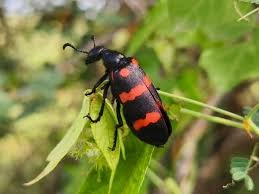Tñacuaches, commonly known as opossums, are fascinating marsupials found primarily in the Americas. Often misunderstood, these creatures are nature’s unsung heroes, contributing to ecosystems in remarkable ways. In this article, we’ll explore their unique traits, ecological importance, and why they deserve our admiration. Squirrels in Home Behavior
What is a Tñacuache?
Tñacuache, or opossum, is a nocturnal marsupial known for its adaptability and resilience. Native to Central and South America, these animals have a distinctive prehensile tail, which helps them climb and forage. As marsupials, they carry their young in a pouch, much like kangaroos. These creatures are often spotted scavenging at night, playing a vital role in controlling pests and cleaning up waste.
The Ecological Role of Tñacuaches
Tñacuaches are more than just scavengers; they are key players in maintaining healthy ecosystems. Here’s how they contribute:
- Pest Control: Tñacuaches eat a variety of pests, including ticks, rodents, and insects. A single tñacuache can consume thousands of ticks in a season, reducing the spread of Lyme disease and other tick-borne illnesses.
- Natural Cleanup Crew: These marsupials help decompose organic matter by scavenging on carrion and leftover food, preventing the accumulation of waste.
- Seed Dispersers: By consuming fruits and berries, tñacuaches aid in seed dispersal, promoting plant growth and biodiversity.
Unique Traits of Tñacuaches
- “Playing Dead”: One of the most well-known traits of tñacuaches is their ability to play dead when threatened. This involuntary response, called “tonic immobility,” confuses predators and gives the tñacuache a chance to escape.
- Immune to Snake Venom: Tñacuaches have a remarkable resistance to certain snake venoms, enabling them to hunt venomous snakes and contribute to pest control.
- Marsupial Characteristics: Female tñacuaches have a pouch where they carry their young until they are old enough to survive on their own.
Why Tñacuaches Deserve Our Respect
Despite their ecological importance, tñacuaches often face threats from humans due to misconceptions and habitat destruction. Here’s why we should respect and protect them:
- Natural Pest Control: By reducing tick populations and controlling pests, they contribute to healthier environments for humans and animals alike.
- Non-Aggressive Nature: Tñacuaches are shy and unlikely to attack unless provoked. They are harmless creatures just trying to survive.
- Environmental Cleanup: Their scavenging habits prevent the spread of disease and promote cleanliness in natural habitats.
Common Misconceptions About Tñacuaches
- “They’re Dirty and Carry Diseases.” Tñacuaches are surprisingly clean animals. They groom themselves regularly and are less likely to carry diseases than other mammals like rats.
- “They’re Aggressive.” These animals are shy and will avoid confrontation. Their primary defense mechanism is flight, not fight.
- “They’re Pests.” Far from being pests, tñacuaches play a crucial role in ecosystems by controlling other pest populations and cleaning up waste.
Frequently Asked Questions About Tñacuaches
Q1: What do tñacuaches eat?
Tñacuaches are omnivores, feeding on fruits, insects, small animals, and carrion. They’re also known to eat garden pests like snails and slugs.
Q2: Are tñacuaches dangerous to humans?
No, tñacuaches are not dangerous. They are shy creatures that avoid human interaction and pose little to no threat.
Q3: How can I encourage tñacuaches in my garden?
To attract tñacuaches, provide a safe environment with plenty of natural food sources like fruits and insects. Avoid using pesticides and leave some natural cover like shrubs or trees.
Q4: What should I do if I see a tñacuache in my yard?
Simply observe and enjoy their presence. Tñacuaches are beneficial to have around and will move on after foraging.
Q5: Are tñacuaches protected by law?
In many regions, tñacuaches are protected by wildlife conservation laws. It’s illegal to harm or kill them without proper authorization.
How to Protect Tñacuaches
- Create a Wildlife-Friendly Habitat: Plant native shrubs and trees to provide shelter and food.
- Avoid Using Pesticides: Chemicals can harm tñacuaches and the insects they rely on for food.
- Spread Awareness: Educate others about the ecological importance of tñacuaches to dispel misconceptions.
Conclusion
Tñacuaches may not be the most glamorous animals, but their contributions to the environment are invaluable. By controlling pests, cleaning up waste, and dispersing seeds, they help maintain balanced ecosystems. The next time you see a tñacuache, take a moment to appreciate this resilient and misunderstood creature. Together, we can ensure their survival and protect the delicate web of life they support.
Brit is a passionate writer with a love for storytelling and exploring the depth of human experience through words. With a keen eye for detail and a thoughtful voice, Brit crafts pieces that resonate with readers and spark meaningful reflection. When not writing, Brit enjoys quiet moments with a good book, long walks, and finding inspiration in everyday life.






